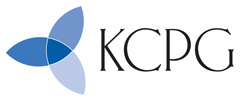 What is TMS (transcranial magnetic stimulation)?
What is TMS (transcranial magnetic stimulation)?
It is a non-invasive treatment where magnetic pulses are delivered to stimulate nerve cells in the part of the brain controlling the mood, which is often underactive in patients with depression.
Repeated stimulation of this part of the brain has proven to produce an antidepressant effect on people suffering from depression. TMS is also known as rTMS (repetitive transcranial magnetic stimulation) because more than one magnetic pulse is delivered to the brain during a treatment session.
Below are answers to some of the questions you may have.
What is TMS used for?
TMS has been recommended by the American Psychiatric Association since 2010 and FDA cleared since 2008 for the treatment of major depressive disorder. Depression, or Major Depressive Disorder (MDD), is a common mental disorder which affects approximately 1 in 15 adults. The most common treatment for mild-moderate depression is antidepressant pharmacotherapy and/or psychotherapy. However, a significant number of patients do not experience benefit from the treatment or cannot tolerate the side effects and are thus considered “treatment-resistant”. For those patients, there is another option called transcranial magnetic stimulation, or TMS.
Am I a candidate for TMS
TMS is indicated for the treatment of major depressive disorder in adult patients who have failed to receive satisfactory improvement from prior antidepressant medication in the current episode. TMS therapy is available by prescription only. Your doctor will use medication dosing records and depression scores among other measures to determine whether or not you are a candidate for TMS therapy.
How long does it take?
One treatment is given per day, 5 times per week, over a period of about 6 weeks. Individual treatments average about 20 minutes per session.
What does TMS feel like?
You sit in a chair in a relaxed position. When the magnetic pulses are delivered you hear a clicking sound and feel a tapping sensation on your head. Many patients are able to read a book or listen to music during treatment.
Are there side effects to TMS therapy?
TMS may, for some, cause headache or nausea, but you should be able to resume your daily activities right after treatment. Over-the-counter pain medications can be taken prior to treatment if headaches are experienced.
Is TMS covered by my insurance?
TMS is reimbursed by most insurance providers. Prior authorization is required to be obtained before treatments are started, which can be handled by your doctor and the billing staff.
